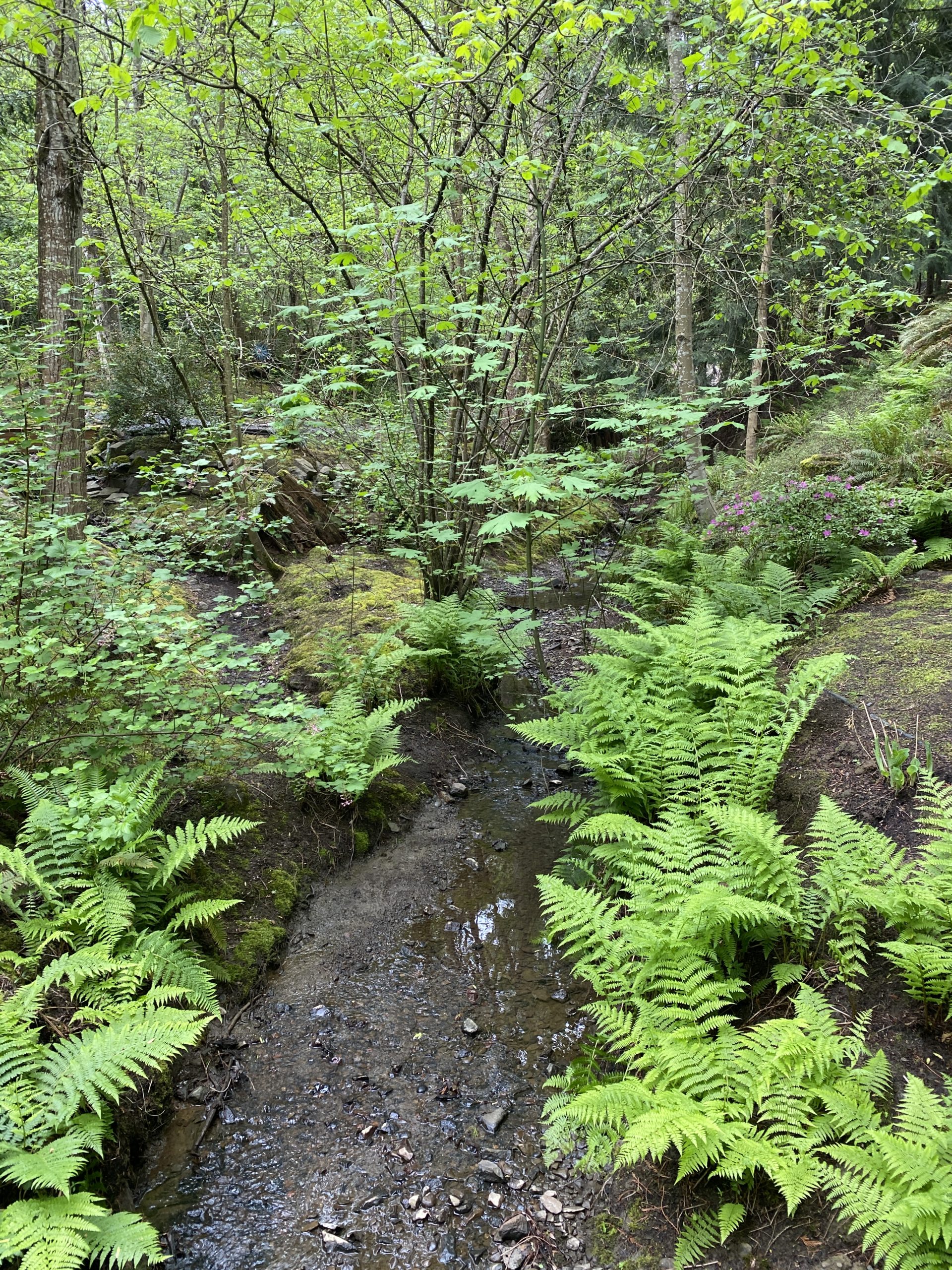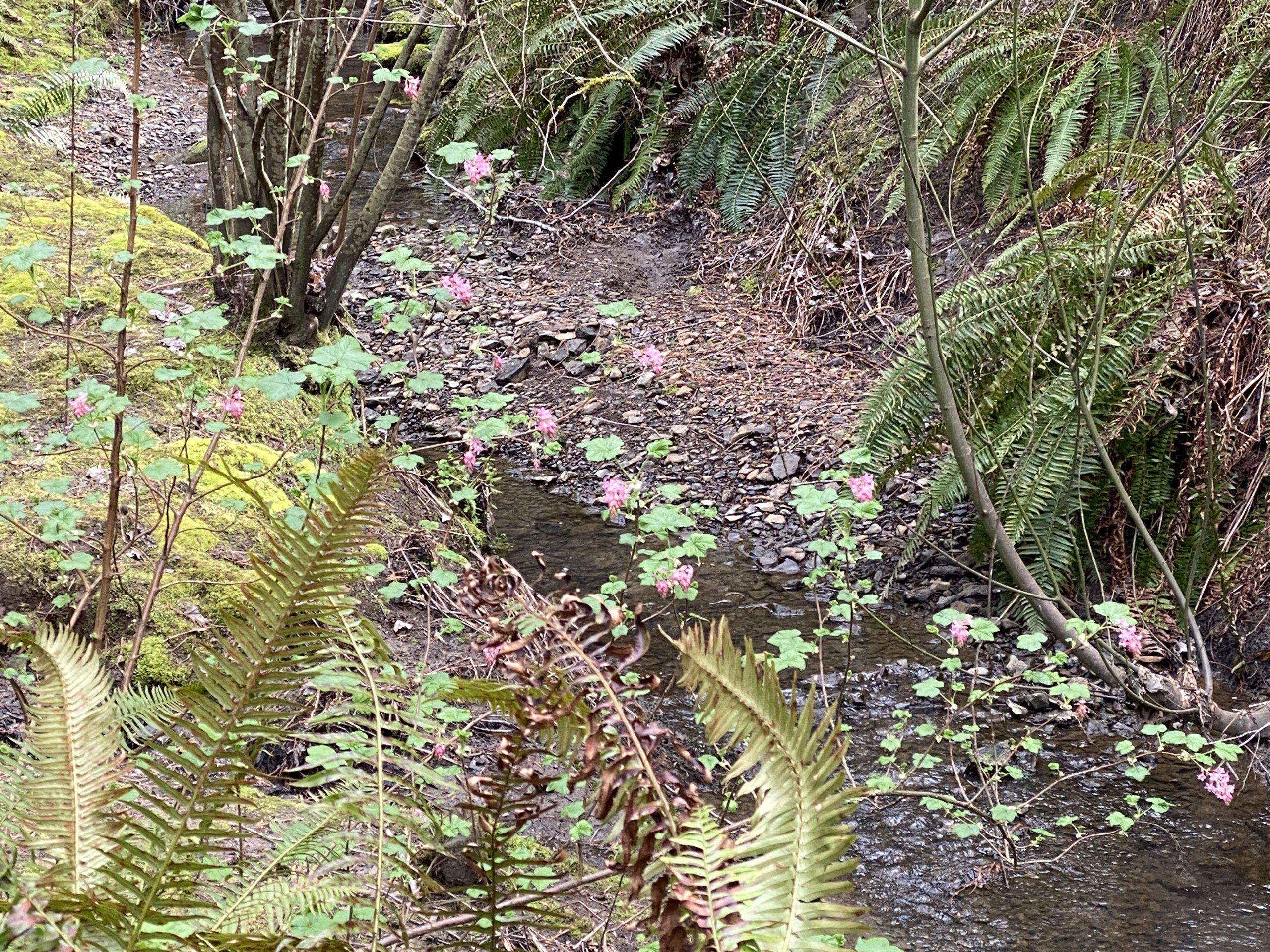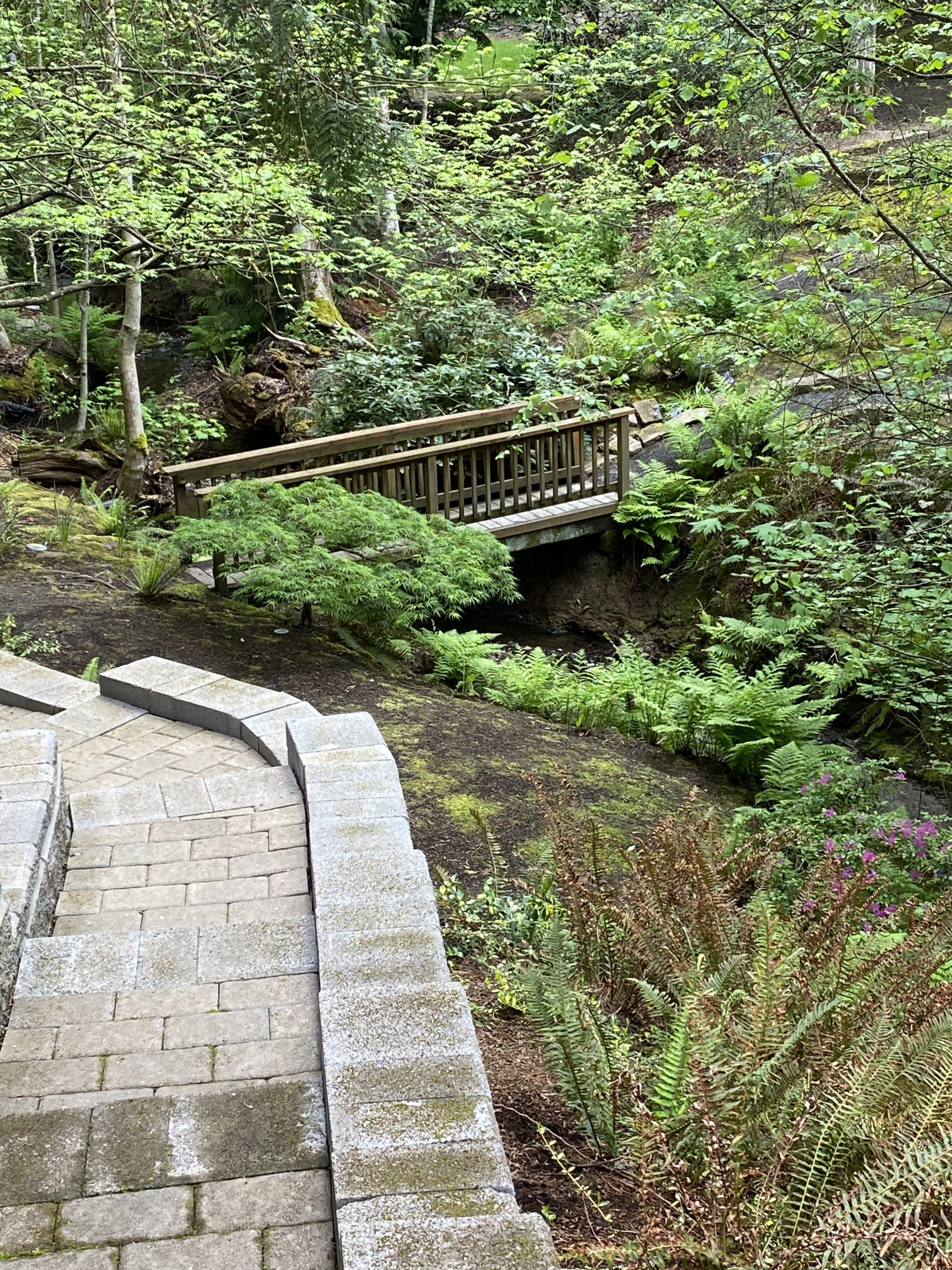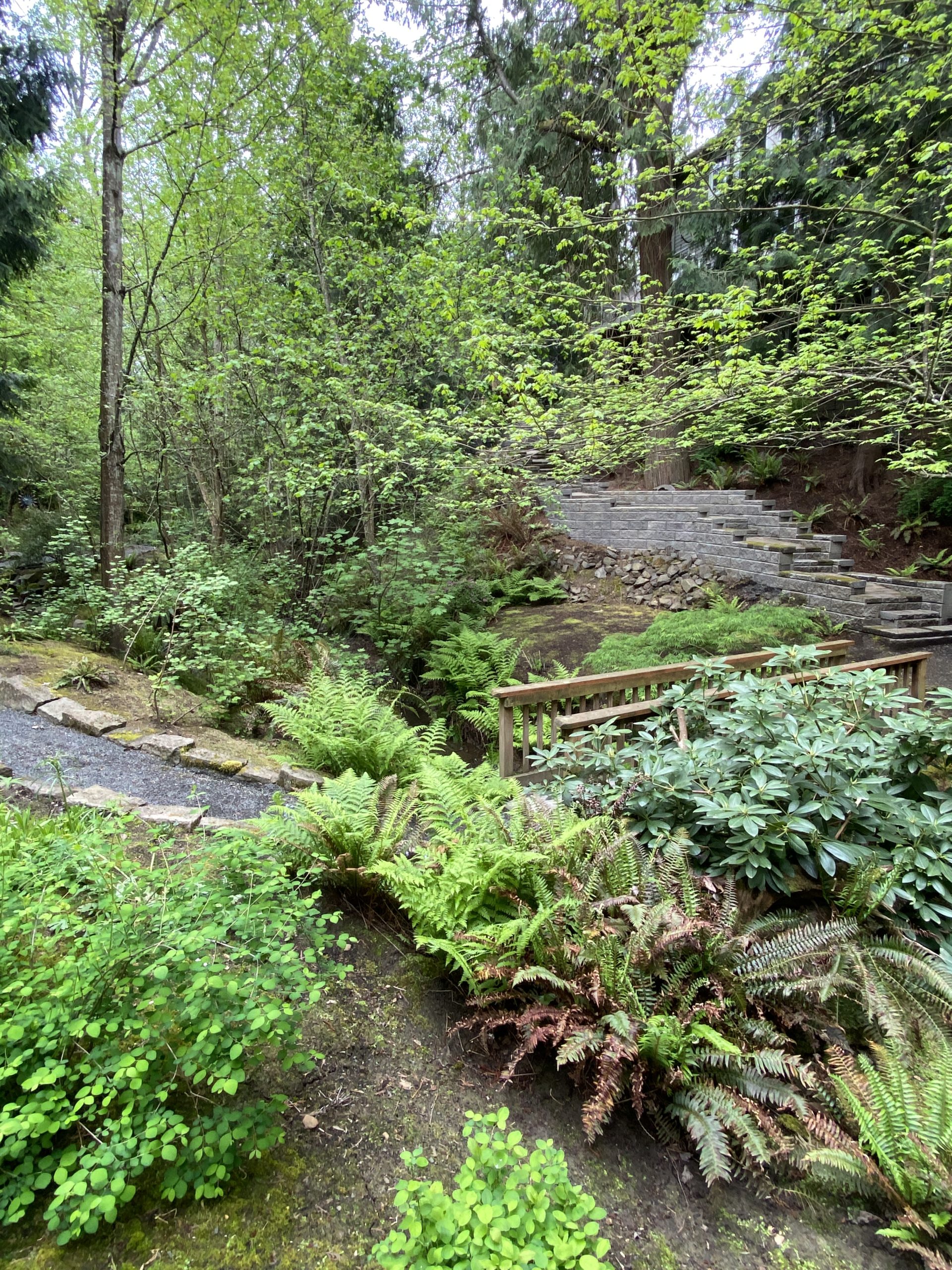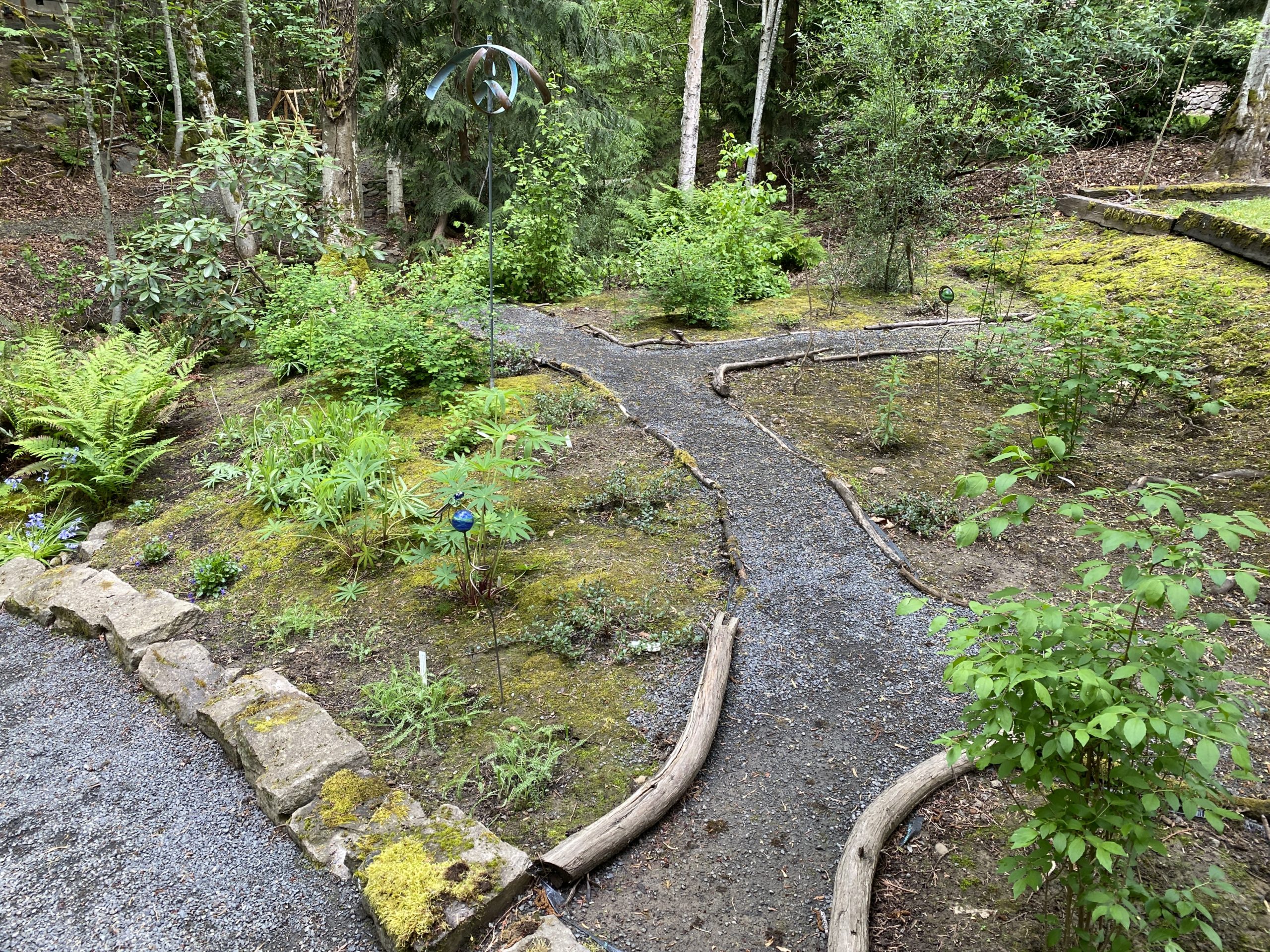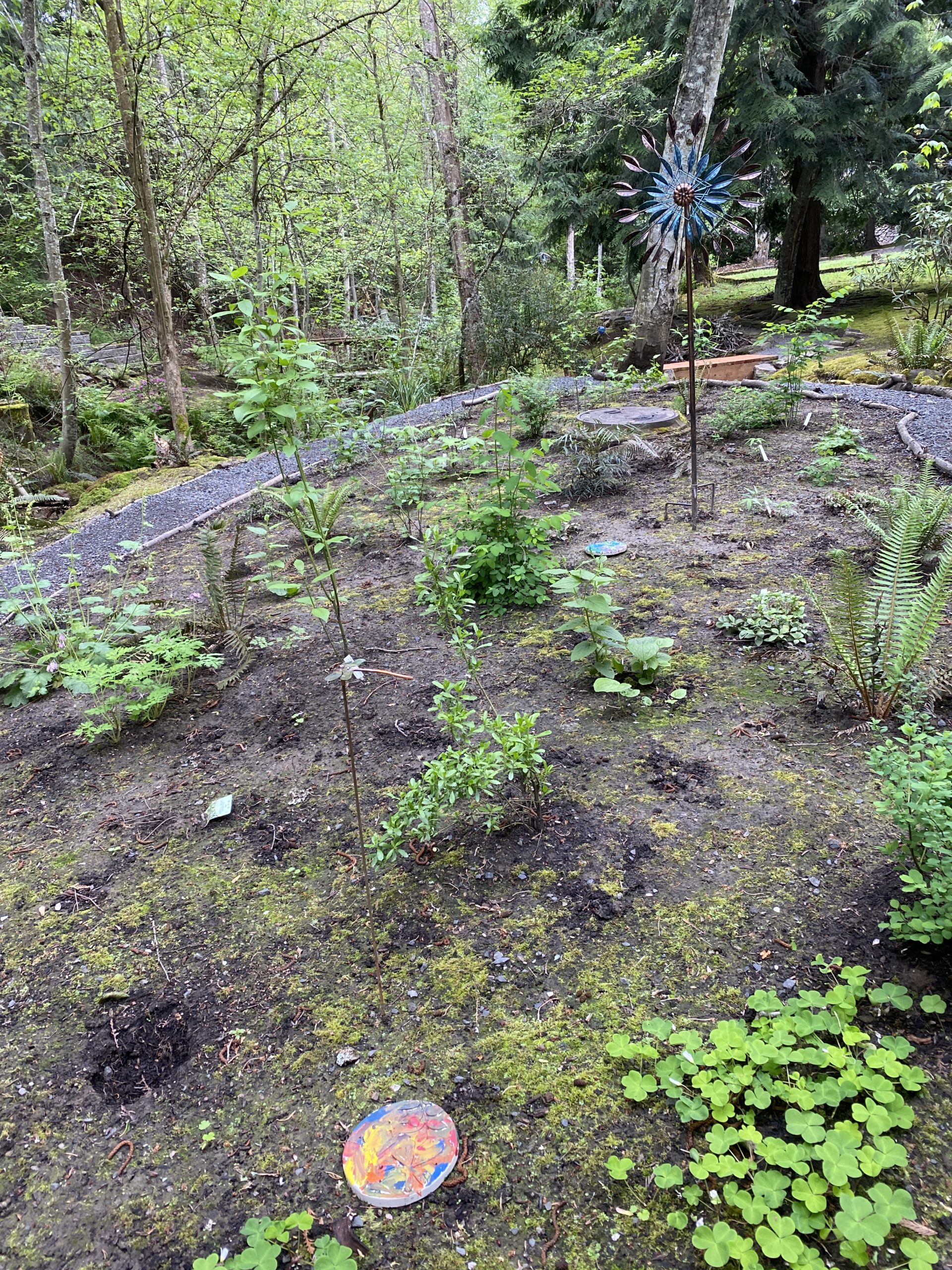Site Information: Located in Ash Creek Woods in SW Portland, Sue and Bob’s habitat has part sun to shade conditions, with soil conditions ranging from dry to wet, and the presence of a slope.
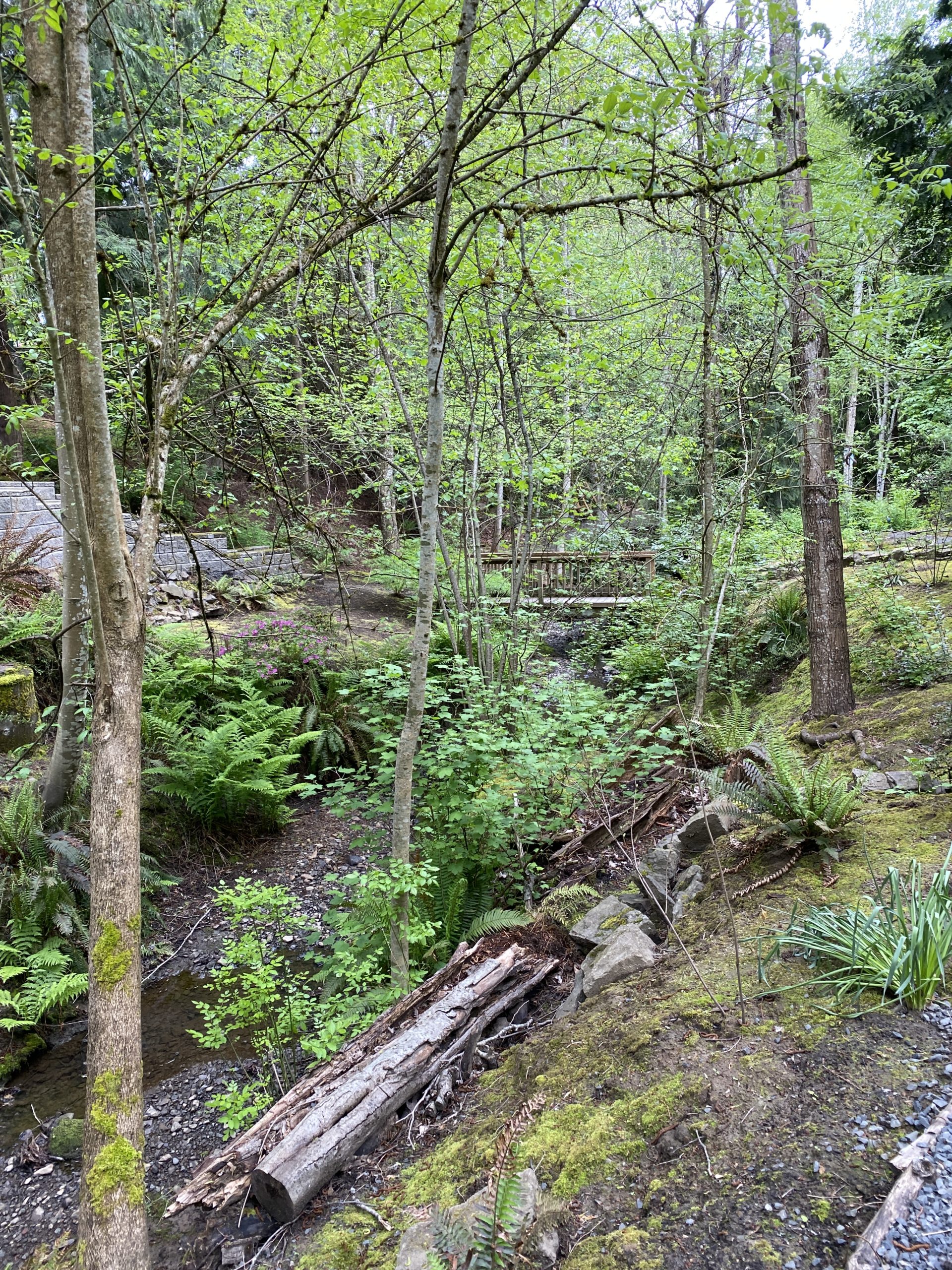
What inspired you to enroll in the Backyard Habitat Certification Program?
We began reshaping our backyard approximately ten to twelve years ago, ridding the area which sloped to a small creek (Ash Creek) of ivy, blackberry and other invasive plant species. We began simply with sword ferns, lady ferns, red currant, red-twigged dogwood. While we had seen signs for the BHCP, we had never inquired until a friend in the neighborhood joined the program and encouraged us to do so in the summer of 2019 that we decided to enroll as the program’s goals aligned with our aspirations for our property. We were certified Platinum in August 2020.
How would you describe your habitat?
Our habitat has a wide range of native plantings, nurse logs, snags and a year-round stream which provides ideal habitat. The property is steeply sloped from the developed portion of the property down to the stream. The opposite bank is less steeply sloped to the creek and has a smaller intermittent stream that feeds into Ash Creek on our property.
What are your top three favorite native plants and why do you love them?
We love the red flowering currants we have planted on our hillside and creekside which have been in full bloom this spring. We have several large Western red cedar trees on our property, including one that has suffered storm damage in the distant past leading to its profusion of large arms reaching to the sky which has such personality. It also provides privacy to the second story bedrooms of our home which we cherish.
What changes have you observed as a result of creating habitat?
We have seen an increase in wildlife, primarily birds at this point – hummingbirds, pileated woodpeckers and many others. Large portions of our property were largely unplanted (the steep slopes) or grass (the more level areas) except for invasive plant species, and since we started planting native plants, we have seen large areas fill in with plants that have propagated themselves from our original plantings. There are several other participants in the BHCP in our little neighborhood, including two friends, and it is great to share information and trade plants among ourselves.
What were the two most significant challenges you encountered while creating habitat, and how did you address them?
Ridding the property of the ivy and blackberry was the biggest noxious weed problem we encountered, though we have eliminated and recurrences of these for the most part. The Robert geranium is more persistent and we have to address it each spring. One of the principal reasons we planted on our steep slope was erosion control as neighbors have suffered slides in past years. Our plantings of sword ferns, red-flowered currant and other native plants on the slope has certainly helped. We have had to move some plants around to help them find their happy spot – an ongoing process.
What resources did you find especially helpful?
Talking with friends who also want to restore our beautiful creek with native plants and habitat has been the most rewarding and educational assistance.
How do you enjoy your Backyard Habitat throughout the different seasons? What are its highlights in each season?
Seeing the plants spring to life as winter loosens its grip and the flowering of several of the native plant species we have planted is exciting.
What part of your backyard habitat are you most proud of?
We are excited about and proud of the way in which our plantings have improved the diversity of wildlife, especially birds in our neighborhood. With Sue’s encouragement, I have even been able to resist my urge to overplant – for the most part – and watch our yard mature, bit by bit.
Is there anything else you’d like to add about your journey?
It has been a lot of fun, and very exciting, to see the changes.
